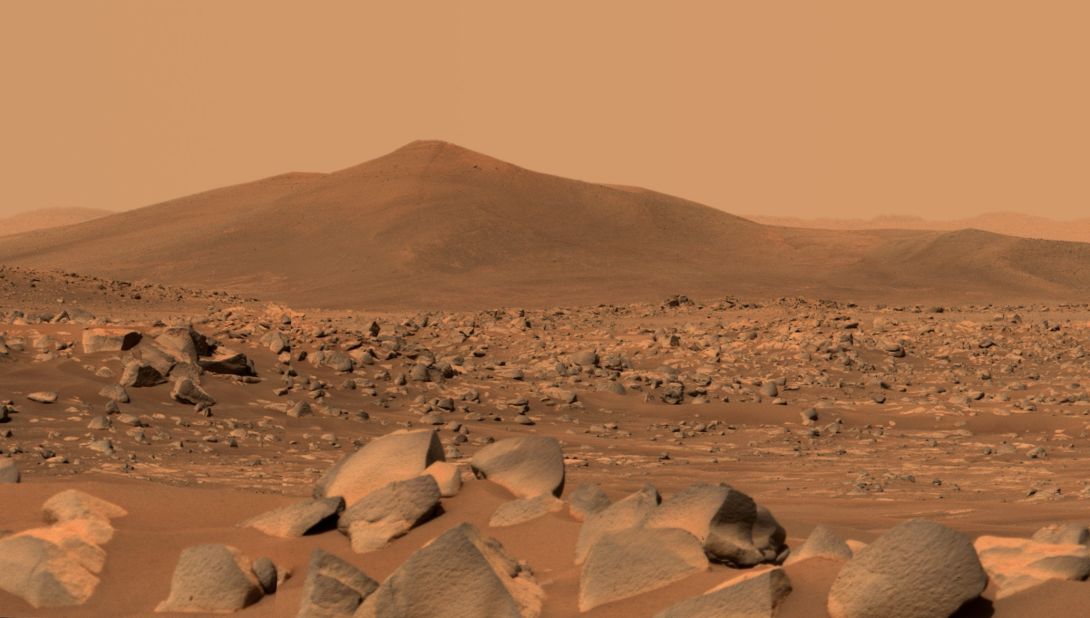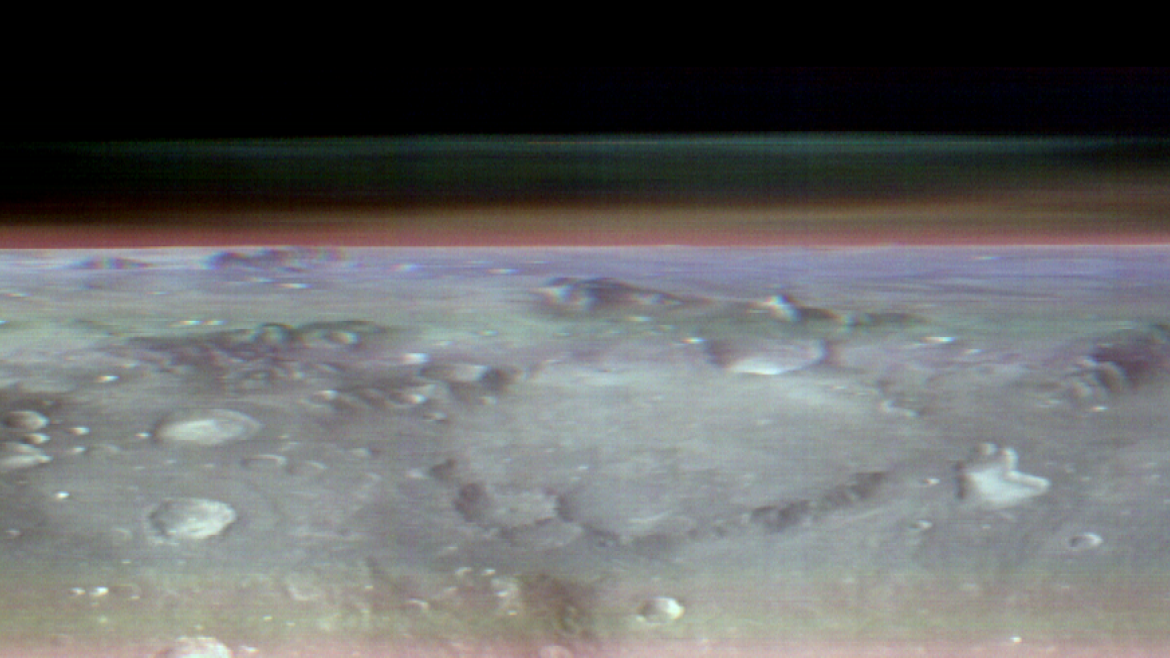NASA Orbiter Captures Breathtaking Views Of The Mars Horizon
NASA Orbiter captures breathtaking views of the Mars horizon giving scientists studying Mars breathtaking experiences similar to astronauts viewing the curvature of Earth from the International Space Station. NASA's 2001 Mars Odyssey orbiter, having successfully completed its 22nd year of exploration on the Red Planet last month, continues to provide a unique perspective for researchers studying Mars.
Author:Hajra ShannonReviewer:Paula M. GrahamNov 30, 20231.9K Shares128.7K Views

NASA Orbiter captures breathtaking views of the Mars horizongiving scientists studying Mars breathtaking experiences similar to astronauts viewing the curvature of Earth from the International Space Station. NASA's 2001 Mars Odyssey orbiter, having successfully completed its 22nd year of exploration on the Red Planet last month, continues to provide a unique perspective for researchers studying Mars.
The spacecraft recently recorded a sequence of panoramic images, revealing the undulating Martian terrain beneath veils of clouds and dust. When combined seamlessly, the 10 images present a breathtaking and novel perspective of Mars.
Beyond its aesthetic appeal, this imagery holds significant scientific value, aiding researchers in acquiring fresh insights into the intricacies of the Martian atmosphere. These captivating snapshots were taken in May, capturing the Martian landscape from an altitude of approximately 250 miles (400 kilometers), mirroring the orbit height of the International Space Station above Earth.
"If there were astronauts in orbit over Mars, this is the perspective they would have," said Jonathon Hill of Arizona State University, operations lead for Odyssey's camera, called the Thermal Emission Imaging System, or THEMIS. "No Mars spacecraft has ever had this kind of view before."
How It Was Done
The uniqueness of this perspective stems from the intricate planning required to create it. Engineers at NASA's Jet Propulsion Laboratory in Southern California, responsible for overseeing the mission, collaborated with Lockheed Martin Space, the entity that constructed Odyssey and shares in its day-to-day operations. This collaboration involved three months of meticulous planning for the THEMIS observations.
The infrared camera's remarkable sensitivity to warmth empowers it to map various elements on Mars' surface, including ice, rock, sand, and dust, while also tracking temperature fluctuations. Although the camera can measure water ice or dust in the atmosphere, it is constrained to a narrow column directly beneath the spacecraft due to THEMIS being fixed in place on the orbiter, typically pointing straight down.
Desiring a more comprehensive view of the atmosphere, the mission aimed to observe the layers of water-ice clouds and dust in relation to each other. This expanded perspective, whether capturing a single layer or multiple layers stacked, aids scientists in refining models of Mars' complex atmosphere.
“„I think of it as viewing a cross-section, a slice through the atmosphere. There's a lot of detail you can't see from above, which is how THEMIS normally makes these measurements.- Jeffrey Plaut, Odyssey's project scientist at JPL
Due to THEMIS's fixed orientation, repositioning the camera necessitates adjusting the entire spacecraft. In this instance, the team undertook a nearly 90-degree rotation of the orbiter. This maneuver required careful consideration to ensure that the sun continued to illuminate the spacecraft's solar panels while avoiding exposure to sensitive equipment susceptible to overheating.
The most feasible orientation involved pointing the orbiter's antenna away from Earth, temporarily interrupting communication with Odyssey for several hours until the operation concluded. Looking ahead, the Odyssey mission aspires to replicate such image captures in the future, aiming to document the Martian atmosphere across various seasons.
Over The Moon
To maximize their endeavors, the mission seized the opportunity to capture imagery of Mars' diminutive moon, Phobos. Remarkably, this event signifies the seventh occasion in the orbiter's 22-year mission lifespan where THEMIS was directed towards the moon for the purpose of gauging temperature fluctuations across its surface.
“„We got a different angle and lighting conditions of Phobos than we're used to. That makes it a unique part of our Phobos dataset.- Jonathon Hill
The recently obtained imagery offers valuable insights into the composition and physical characteristics of Phobos, Mars' smaller moon. This data holds the potential to contribute to the resolution of a longstanding debate: whether Phobos, with its dimensions of about 16 miles (25 kilometers) across, is a captured asteroid or an ancient fragment ejected from Mars' surface due to an impact.
NASA is actively engaged in collaboration with JAXA (Japan Aerospace Exploration Agency) in a joint sample return mission named Mars Moon eXplorer (MMX), focused on Phobos and its sibling moon, Deimos. The imagery of Phobos captured by Odyssey proves beneficial for scientists involved in both the Odyssey mission and the MMX project.
Jump to

Hajra Shannon
Author

Paula M. Graham
Reviewer
Latest Articles
Popular Articles
